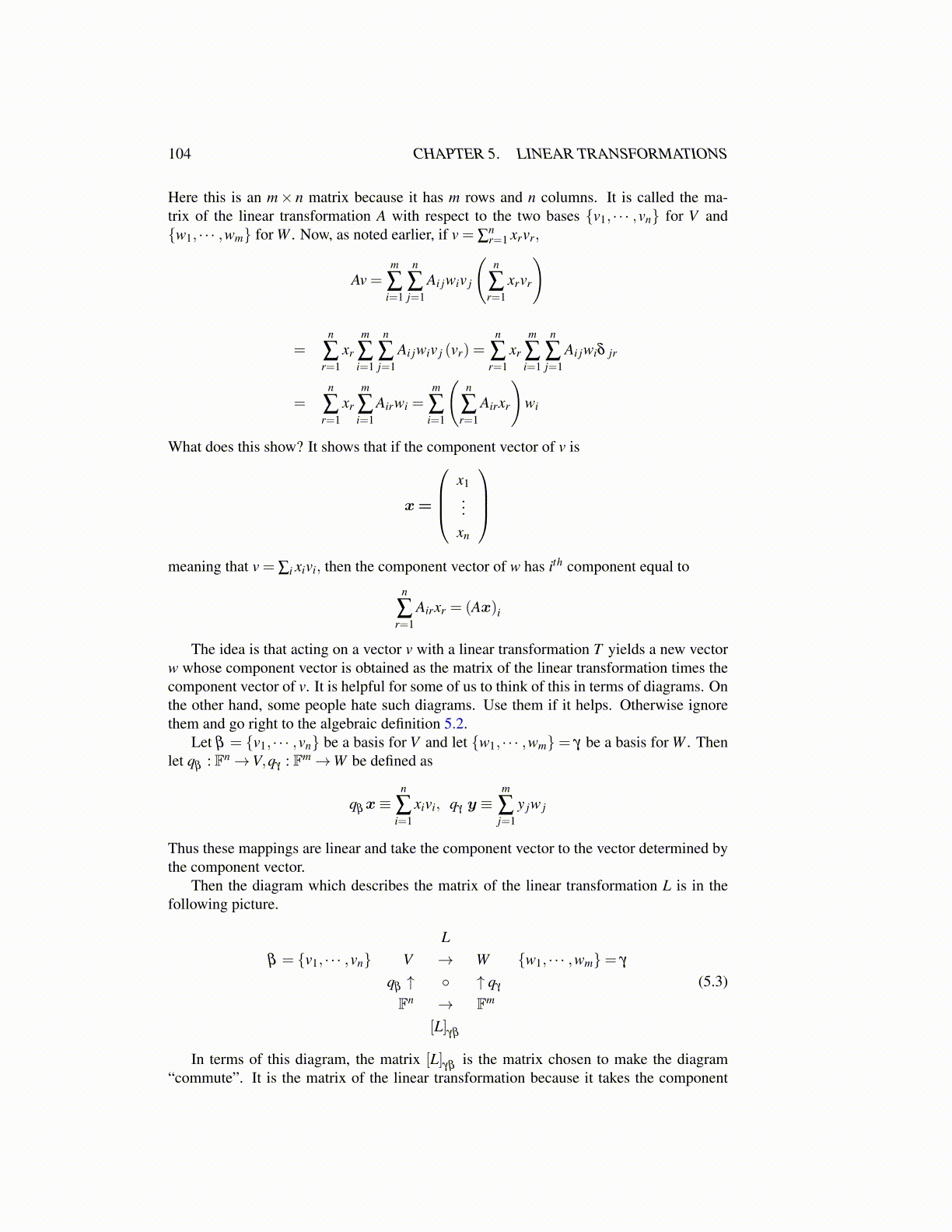
104 CHAPTER 5. LINEAR TRANSFORMATIONS
Here this is an m× n matrix because it has m rows and n columns. It is called the ma-trix of the linear transformation A with respect to the two bases {v1, · · · ,vn} for V and{w1, · · · ,wm} for W . Now, as noted earlier, if v = ∑
nr=1 xrvr,
Av =m
∑i=1
n
∑j=1
Ai jwiv j
(n
∑r=1
xrvr
)
=n
∑r=1
xr
m
∑i=1
n
∑j=1
Ai jwiv j (vr) =n
∑r=1
xr
m
∑i=1
n
∑j=1
Ai jwiδ jr
=n
∑r=1
xr
m
∑i=1
Airwi =m
∑i=1
(n
∑r=1
Airxr
)wi
What does this show? It shows that if the component vector of v is
x=
x1...
xn
meaning that v = ∑i xivi, then the component vector of w has ith component equal to
n
∑r=1
Airxr = (Ax)i
The idea is that acting on a vector v with a linear transformation T yields a new vectorw whose component vector is obtained as the matrix of the linear transformation times thecomponent vector of v. It is helpful for some of us to think of this in terms of diagrams. Onthe other hand, some people hate such diagrams. Use them if it helps. Otherwise ignorethem and go right to the algebraic definition 5.2.
Let β = {v1, · · · ,vn} be a basis for V and let {w1, · · · ,wm}= γ be a basis for W . Thenlet qβ : Fn→V,qγ : Fm→W be defined as
qβx≡n
∑i=1
xivi, qγ y ≡m
∑j=1
y jw j
Thus these mappings are linear and take the component vector to the vector determined bythe component vector.
Then the diagram which describes the matrix of the linear transformation L is in thefollowing picture.
Lβ = {v1, · · · ,vn} V → W {w1, · · · ,wm}= γ
qβ ↑ ◦ ↑ qγ
Fn → Fm
[L]γβ
(5.3)
In terms of this diagram, the matrix [L]γβ
is the matrix chosen to make the diagram“commute”. It is the matrix of the linear transformation because it takes the component